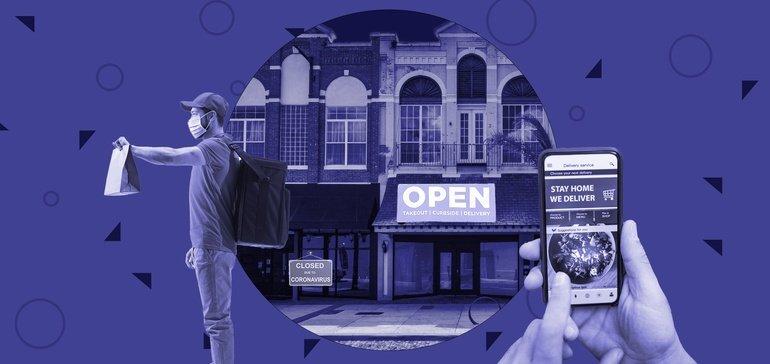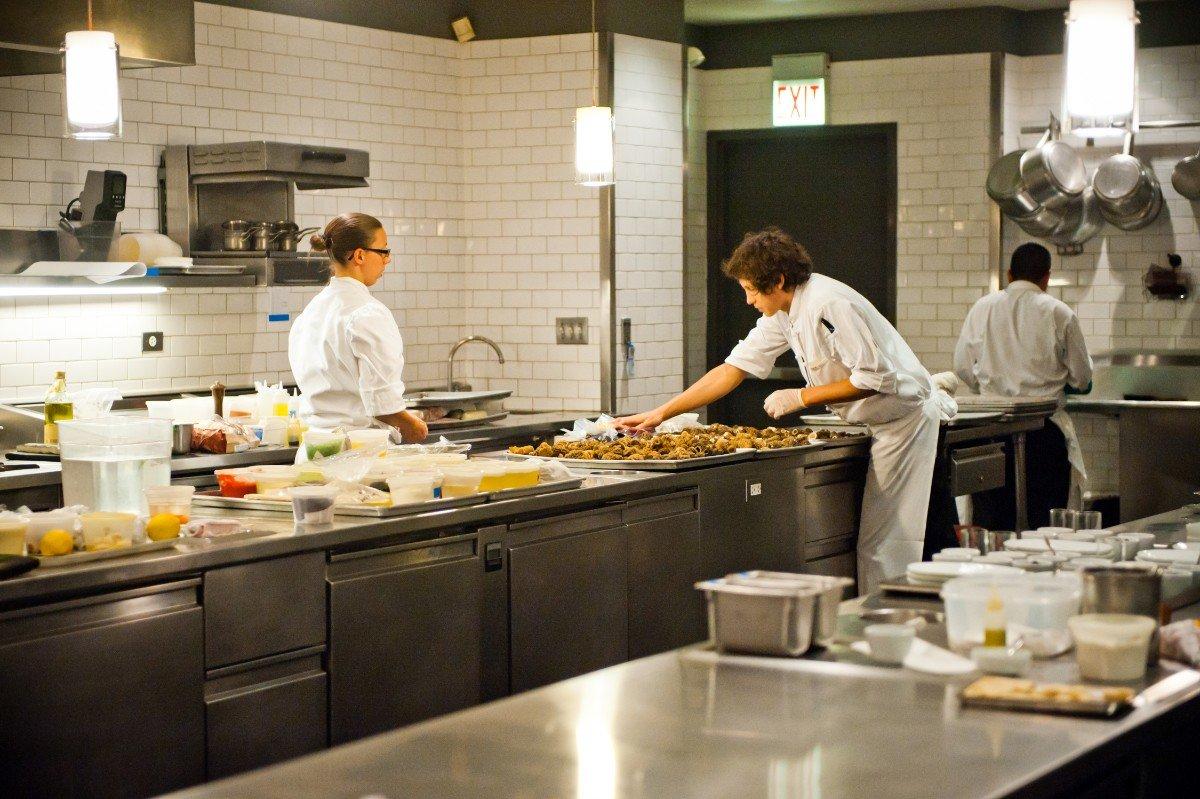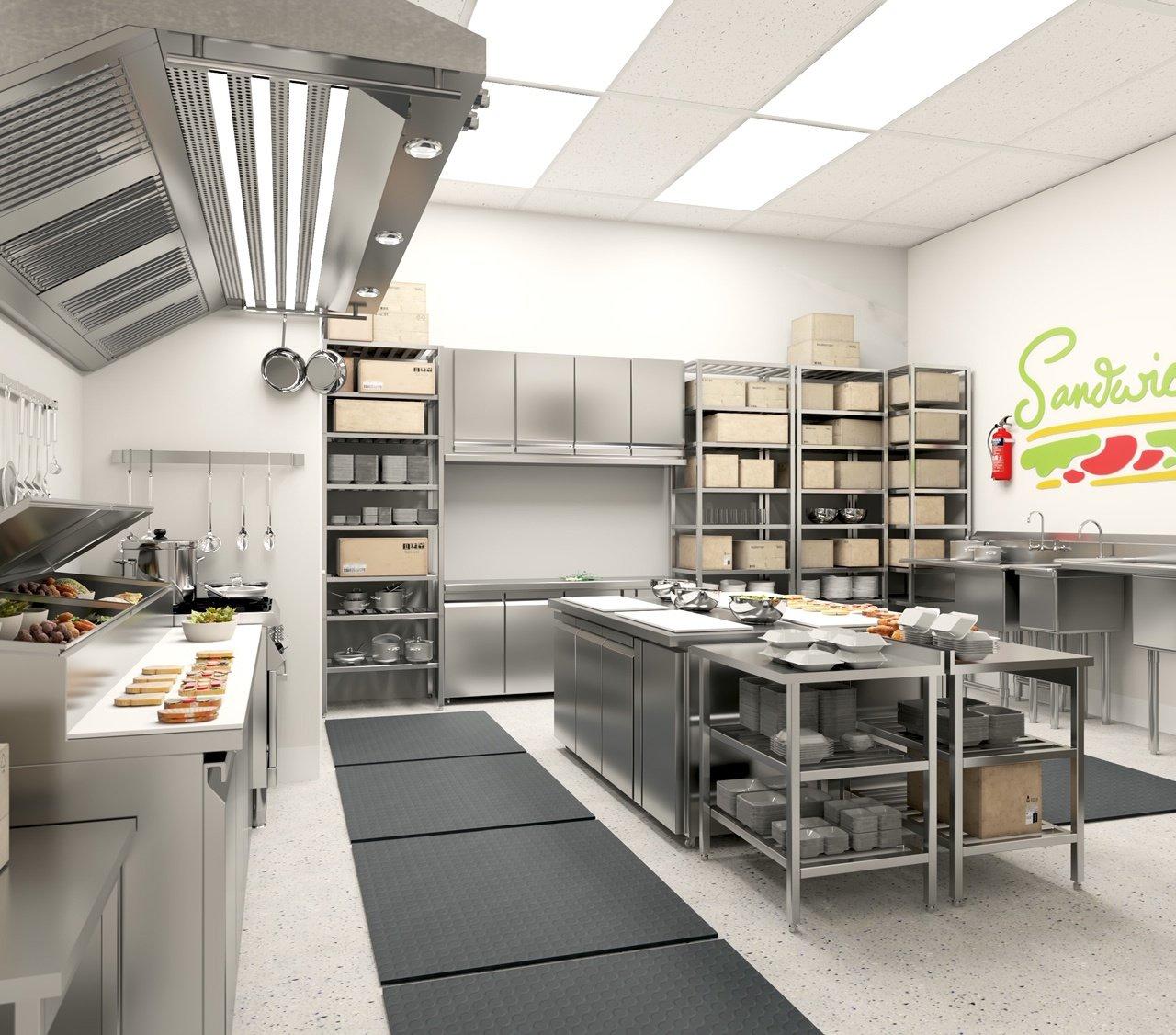By Alicia Kelso of Restaurant Dive,
Never before have the lights gone out at so many independent restaurants in such a short amount of time. But there may be opportunity for some to bring their kitchens back to life — in the dark.
There's no question that more restaurants big and small are embracing dark kitchens amid the pandemic. The number of eateries using these concepts grew from 15% pre-pandemic to 51% in May, according to Technomic data.
But while major chains are entering the space to open up another revenue stream or expand into new markets at a reduced cost, plenty of small operators are turning to ghost kitchens just to survive.
The trend may already be having a ripple effect on the industry. Over the past few months, third-party ghost kitchen platforms serving independent restaurants have grown — and are growing — substantially.
Demand for virtual kitchen companies is growing
Reef Kitchens, which manages food truck-like hubs that can host up to six restaurant brands, has seen an uptick in interest from independent restaurants since the pandemic hit in March. The company expanded its capacity by doubling its kitchens in its top markets, and plans to sign over 100 restaurants this year. COO Carl Segal said local brands now make up about 20% to 30% of the business, while regional and national restaurants comprise 70% to 80%.
"Pre-COVID, we had a good percentage [of] our own digital-only brands that we created to get our system up and running. Throughout the past few months, we started to [shift focus from] our brands and amp up the intensity around local, relevant brands because of demand," Segal said.
Denver-based ChefReady, which rents delivery-only kitchen spaces, has also experienced a "tremendous" amount of interest since the pandemic hit, ChefReady co-founder Nili Malach Poynter said.
"Before COVID, the ghost kitchen model was growing, especially in major cities. Now that COVID has shaken things up, more people are looking into it. Previously, a lot of independents couldn’t wrap their head around this new model, but the devastation they've experienced has changed that. I think the pandemic has opened up everybody to at least consider it," Poynter said.
"Previously, a lot of independents couldn’t wrap their head around this new model, but the devastation they've experienced has changed that. I think the pandemic has opened up everybody to at least consider it."
Nili Malach Poynter
Co-founder, ChefReady
Even online ordering and website design company BentoBox jumped into the ghost kitchen space earlier this year after experiencing an increase in such concepts using its services. In the past month alone, BentoBox has signed up about 30 ghost kitchen concepts and has launched four of its own — Thai Now, Artisans Oven, Heavenly BBQ and Drunk Chicks Chicken.
"Prior to COVID-19, we worked with several ghost kitchens, but we’ve seen a large increase over the past couple of months as restaurants look to reduce operating costs and financial risks," CEO and founder Krystle Mobayeni said.
Bringing independents back to life
The lower-cost model ghost kitchens offer has been a lifeline for some smaller concepts throughout the past few months, either because they’ve been forced to close or because their off-premise business from delivery and carryout has only generated a fraction of pre-COVID revenues.
Segal points to James Beard Award-winning chef Michelle Bernstein as an example. She voluntarily closed her Miami-based Café La Trova due to the coronavirus, but has partnered with Reef Kitchens to "bring it back to life," Segal said.
Restaurateur Michael Schwartz, who temporarily closed all of his Genuine Hospitality Group restaurants in the Miami market during the pandemic, has also partnered with Reef to keep business (and, in some cases, employment) going.
"A lot of independents have been forced to close. Some are reopening, but they’re doing so with skepticism about whether they should open and how they should open. We’re able to be an extension of their brand and, in some cases, we’ve hired their employees to help work on their brands," Segal said.
The Local Culinary, a virtual restaurant group with more than 50 delivery-only concepts operating in the same kitchen, has also seen a remarkable increase in demand from independents throughout this past year. In fact, the pandemic is the reason the company expanded its business from company-operated concepts into what it calls the first-ever ghost restaurant kitchen franchise model. This decision was explicitly made to help independent restaurants survive, according to founder Alp Franko.
"We give independents access to up to 50 of our designed-for-delivery brands. We train and assist them throughout the process. Our goal is to help these independent restaurant owners bring in additional revenue on top of their existing revenue stream to be able to pay their bills and stay in business," Franko said. “Since launching the franchise in July, we have received hundreds of potential leads from independent restaurant owners.”
One of those restaurant owners, Richard Leteurtre, from Bistro 1902 in Hollywood, Florida, shut down for two months at the start of the pandemic. He then brought 16 of The Local Culinary’s brands into his existing restaurant to bring in extra sales. Franko said the ease at which Leteurtre was able to incorporate so many brands illustrates why the franchise model is so beneficial. “There is cross prep for several of the key items and ingredients across concepts. So, for example, the same recipe used for crispy chicken might be used in the tacos at another brand.
"Since launching the franchise in July, we have received hundreds of potential leads from independent restaurant owners."
Alp Franko
Founder, The Local Culinary
"In the first month alone, Richard attributed 15% to 20% of his total business to The Local Culinary," Franko said. "He also plans to add five to eight new brands in the coming months and will implement our ghost kitchen concepts in his new restaurant that will open soon."
The Local Culinary has also seen an increase in orders at its flagship South Florida ghost kitchen locations since March. Because of this demand, the company started to grow beyond that home market, signing three locations in San Francisco and eyeing a few locations in New York City, for example.
Branden McRill, founder of Philadelphia’s Fine-Drawn Hospitality, has also jumped into the ghost kitchen space amid the pandemic. The Commons virtual food hall, comprised of several restaurant concepts grouped together into one digital platform, opened earlier this month. The Commons’ layout was created by executive chef Jack Peterson, who conceptualized the ability to arrange the cooking line into six separate, completely differentiated menus. Though it’s early days, McRill is confident in the long-term viability of the model, especially as consumers grow more comfortable interacting with brands digitally.
"One could say we’re pivoting for the current moment, but the other side of this is we’re actually working on developments for the next step from a business perspective," he said. "I don’t like putting patches on a sinking boat. I’d rather pull the boat back to port, rebuild the boats to be faster and stronger and put it back out to sea. That’s really what we’re more focused on doing. I’m not trying to buy time."
McRill, whose Fine-Drawn Hospitality has seven years’ experience running concepts like Walnut Street Cafe, The Post and Sunset Social, adds that now is the perfect time to take a risk in launching a concept like this.
"It’s the perfect time period for people to try new things because people are the most open-minded to anything you’re going to do,” he said. "You’re going to get the most open-minded, forgiving audience you’ve ever had."
The benefits virtual concepts hold for small operators
There are a lot of upsides for independents entering the ghost kitchen or virtual brand space, and chief among them is the lower costs — for occupancy, labor, equipment and more. As operators navigate cost pressures exacerbated by the pandemic, saving on occupancy rates — which can take up to 8% to 10% of a restaurant's gross sales — can ease a significant burden on a low-margin business.
"Ghost kitchens are not the solution, but they are certainly one solution for restaurants that are looking to lower expenses and avoid uncertainty around reopening," said Mobayeni. “Because of this lower overhead, we predict that ghost kitchens are here to stay."
That’s not to say these concepts will replace brick-and-mortar. Segal said some of the restaurants he has worked with have replaced their physical locations with a virtual brand, but most are leveraging the model to augment their presence.
"Those that have kept their brick-and-mortar running have done so at a reduced capacity, so this is supplementing their business and bringing back some lost revenues," Segal said.
Ghost kitchen models may not be a silver bullet for a devastated segment, either. Without a physical independent restaurant scene, the industry loses its community hubs. The lack of a brick-and-mortar location also means that marketing efforts become more critical to entice digital-native customers, which may be challenging for a previously low-tech eatery to execute well.
Conversely, however, ghost restaurants could inspire even more menu creativity from chef-owned independent concepts. According to Fast Company, traditional restaurants can risk around $800,000 to test new menu items, but if a menu fails at a ghost restaurant, it only costs about $25,000.
"Most independents are owned by chefs and all they want to do is cook. They care about food and creativity. I foresee this model, because of its flexibility, as a big benefit to allow them to continue to do just that," Poynter said. "I would even argue this is opening up more doors for aspiring chefs who want to work for themselves as it requires significantly less capital."
That said, McRill believes the future will offer traditional opportunities for brick-and-mortar experiences, but alongside the new digital frontier.
"There’s a hell of a lot of ambience in Katz’s Deli at two in the morning, but if I just want a sandwich, that doesn’t need to be part of the experience," he said. "I think [ghost kitchens] are 100% upon us and are going to continue. And there’s going to be times and places for experiences, and there’s going to be times and places for nourishment and just eating."
The ghost kitchen model is here to stay for independents
The growth of the ghost and virtual kitchen model should continue for some time and impact the entire industry. Poynter said this is especially true as more operators become anxious about reopening.
"COVID has put a lot of fear into a lot of restaurateurs and independents to realize this could all be taken away. They’re more apprehensive now and will be more mindful in making sure they have a stronger bottom line and keep their costs down as much as possible," she said. "Habits are being created, for both consumers and restaurateurs, and that will be hard to change."
Those habits include staggering growth in delivery, which facilitates these ghost kitchen models. Plenty of customers are finding that it’s more convenient to get their favorite restaurant’s food, or even exciting new options from virtual concepts, brought to them with just the push of a button. Or, they may just be anxious to dine out as the pandemic relentlessly lingers throughout the country. Either way, the timing seems right to have a lower-overhead, delivery-only model in place.
"The truth is it’s an entirely different game now than it was just a year ago. The biggest change we’ve seen from pre-COVID to now is now there is a greater sense of urgency. Independents have gone from having a conversation about this to realizing this is something they may need to do," Segal said. "When an independent restaurant closes its doors, they instantly sever their relationships with their customers. The customer just can’t access them anymore. Period. This offers a lifeline for independents to bring back those relationships by delivering their food to their customers’ homes."


